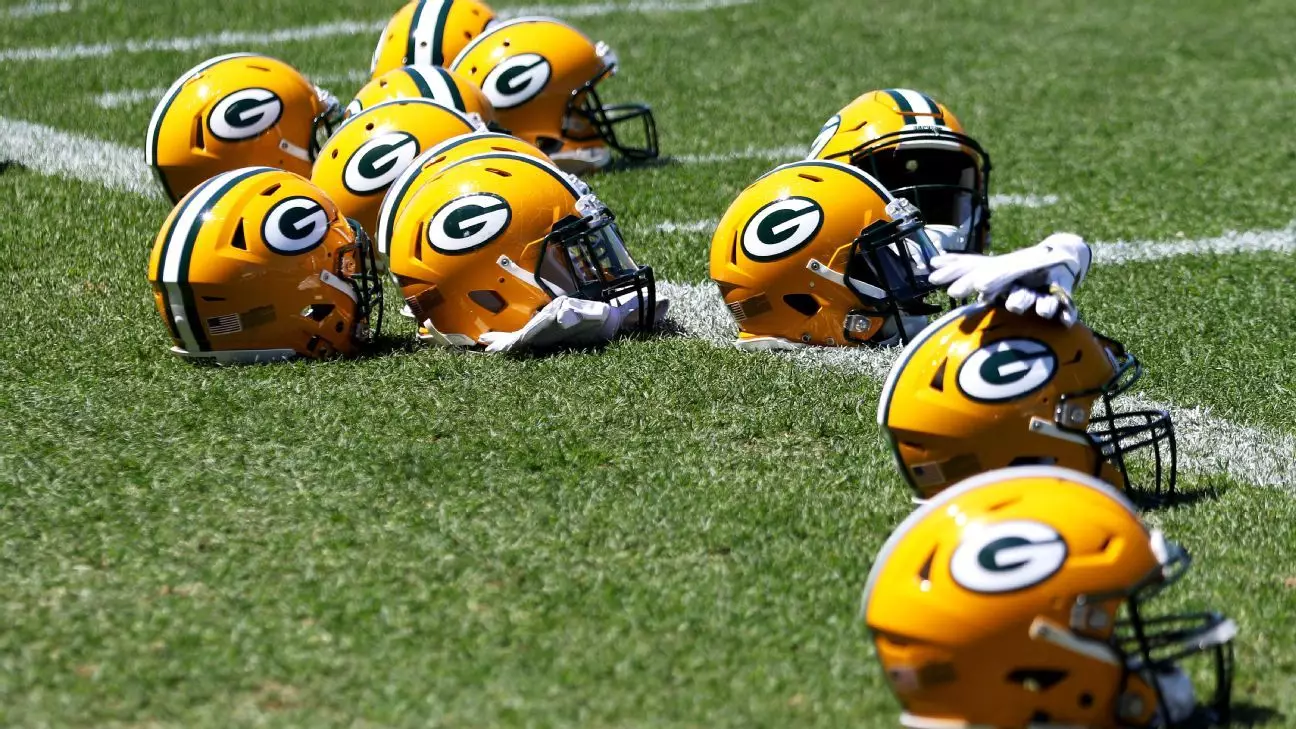The exuberant celebration of NFL’s financial ascent, exemplified by the Green Bay Packers’ recent report, masks a veneer of economic prosperity that deserves closer scrutiny. When Mark Murphy first took on the mantle of leadership 18 years ago, the league’s revenue sharing hovered around a modest $138 million per team. Now, this figure has ballooned to over $432 million, signaling an impressive growth trajectory. However, beneath these headline-grabbing numbers lies a complex web of financial practices and systemic inequalities that remain largely unexamined by the public.
The NFL’s revenue growth appears heartening at first glance, but it is crucial to recognize that these figures are heavily skewed by escalating broadcast rights and streaming deals — a trend that benefits the league’s already massive media empire and leaves traditional revenue streams like local game-day earnings in the dust. The league’s attempt to modernize with streaming signifies adaptation, yet it essentially consolidates its power at the expense of smaller teams and local economies that depend heavily on game-day revenues.
Congruent with this stark concentration of wealth, the Packers’ unique status as a publicly owned team paints a picture of community involvement. Still, the financial figures reveal an unspoken truth: the league’s wealth is increasingly centralized within media companies and affluent ownerships. In effect, millions of everyday fans own a share, yet none reap dividends — a symbolic gesture of community participation that obscures the reality of a commercial juggernaut that primarily benefits corporate and media interests.
Economic Disparities and Centralized Power
The apparent health of the NFL’s financial empire, exemplified by the annual revenue of over $13 billion for the league, conceals a decisive imbalance of wealth and influence. The league’s strategic focus on broadcasting rights and streaming has driven profits sky-high but has also reinforced a system where the richest derive disproportionate benefits while smaller markets watch their local revenue decline in relative importance. This economic disparity extends beyond the league as a whole; the Packers serve as a microcosm of the broader inequities at play.
Despite the impressive revenue growth, the team’s financial statements reveal a cautious approach to ownership. The league maintains strict limits on individual ownership shares, ostensibly to preserve the team’s community-oriented identity. Yet, this regulatory framework effectively prevents genuine democratization of ownership and restricts capital inflows that could otherwise empower teams to innovate or modernize further. The investment in Lambeau Field and infrastructure improvements underscores the Packers’ commitment to stability, but in a broader context, it reflects a cautious strategy that prioritizes preservation over daring expansion or reform.
This cautious conservatism exposes a broader underlying weakness: without private investments from wealthy backers, publicly owned teams become more vulnerable to economic stagnation. The team’s growth in the corporate reserve fund, nearing $600 million, demonstrates prudent financial planning, yet it also highlights the league’s hesitance to embrace more aggressive revenue-generation models. It’s a reminder that in a globalized economy, the NFL’s conservative stance may ultimately curtail its potential long-term growth.
The Illusory Shared Prosperity
While the league’s media-centric revenue streams are booming, the perception of shared prosperity among fans and smaller markets remains illusionary. The NFL’s obsession with media rights deals creates an uneven landscape: the richest teams and the league itself gather the lion’s share of profits, while the grassroots foundation of the sport suffers from stagnation in local revenues.
Furthermore, the league’s emphasis on billion-dollar broadcast contracts and streaming deals invites questions of accessibility and fairness. Is the growth an inclusive one, or does it primarily serve entrenched corporate giants? The narrative of increasing revenue should not obscure the fact that many communities see their teams face challenges beyond just stadium upgrades or infrastructure investments. Economic inequality is etched into the very fabric of the NFL, a symbol of an American sports industry increasingly dominated by the interests of the wealthy elite.
It is undeniable that the league has achieved extraordinary financial milestones, but this prosperity seems to be hollow when viewed through a lens of social and economic equity. The NFL’s narrative of growth and community ownership becomes something of a paradox — a system where most benefit financially are insulated within media contracts, while the average fan and local economy are left to grapple with the fallout of this concentrated wealth. The real question remains: at what cost does this league’s prosperity come, and who truly benefits in the end?


Leave a Reply